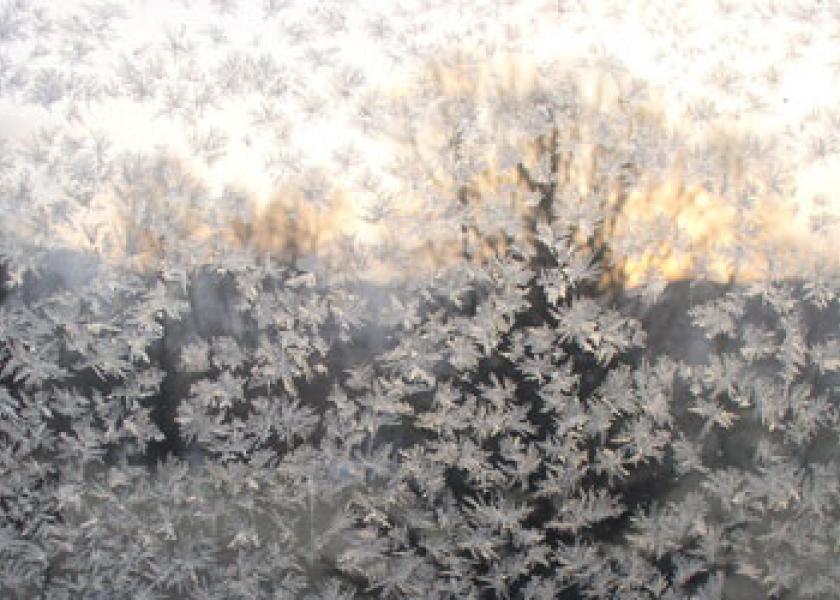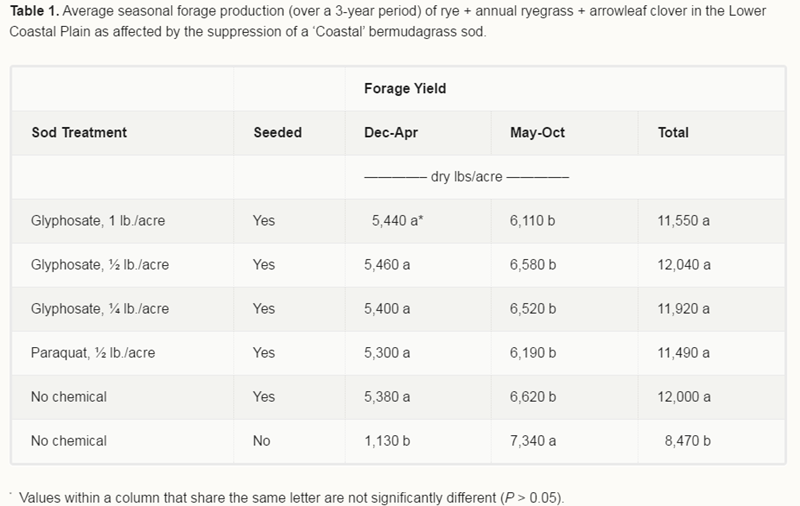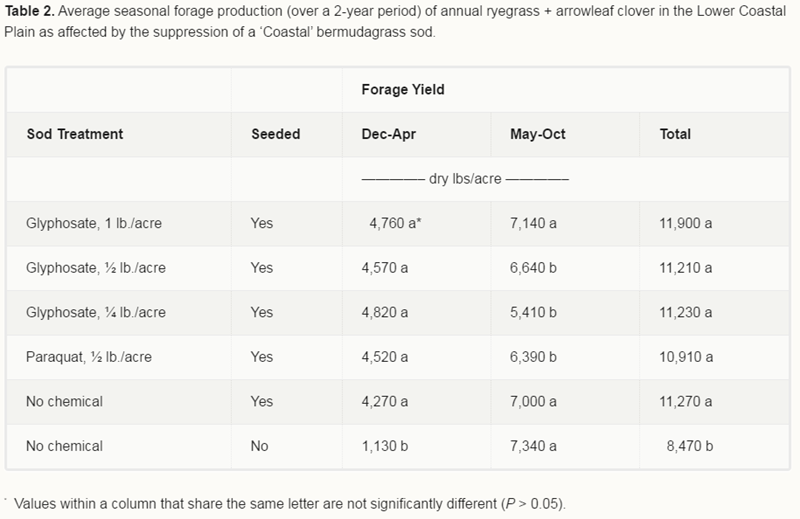Frost in a Bottle

Focusing on winter grazing can be a challenge.
By: Dennis Hancock, Forage Extension Specialist, University of Georgia
The goal of most winter forage systems is to start grazing as soon as possible and continue grazing as late as possible. Early grazing generally requires early planting, but this is not so easy when one is dealing with a warm season grass sod. During the past few years, a number of producers have wrestled with this challenge. As a consequence, I have frequently been asked a very good question: "What would happen to my bermudagrass if I were to chemically-frost it in mid-September so that I can get a jumpstart on planting my winter annuals?"
The easiest way to get the earliest fall grazing is to plant into a prepared seedbed as early as possible (e.g., mid-September in central Georgia). Unfortunately, this is impractical for most cattlemen in the Southeast, as most, if not nearly all, of their land is in a permanent warm season grass sod. Of course, drilling the winter annuals into the sod is a very good option, but it is risky to plant too early (i.e., the last two – three weeks of September) since the sod continues growing well into October and early November in most years/locations. Such is not a friendly environment for that measly little ryegrass, small grain, or clover seedling.
Ideally, one would like to somehow cut short the growing season of the bermudagrass so as to get a jumpstart on the winter grazing season. At the same time, though, one would want to minimize the stress, yield reduction, and stand loss of the warm season perennial sod. Always wanting to have our cake and eat it too, aren’t we?
One idea is to use what some call the "frost-in-a-bottle" technique. In this scenario, a producer would apply a light rate of herbicide to cause the bermudagrass to stop growing, in essence acting like an early hard frost.
Several years ago, researchers in Alabama’s Coastal Plain examined the idea of using glyphosate (e.g., Roundup®, Gly-4™, Glyfos®, etc.) or paraquat (e.g., Gramoxone Inteon®, Firestorm®, etc.) on bermudagrass ahead of mid-September plantings of winter annual forages. They studied the effect of glyphosate, paraquat, and no chemical application when rye-ryegrass-arrowleaf clover (Table 1) or ryegrass-arrowleaf clover (Table 2) was planted into the sod.
The results of this study essentially found that if one looks at the season-long total forage yield, there really was no benefit of using a chemical suppressant when attempting to establish winter annuals into bermudagrass sod. More recent research in Texas using newer herbicide chemistries generally demonstrated a similar lack of benefit.
So, it would be easy to leave it at that: chemically frosting the sod is of no benefit. Though that seems true in an academic sense, it may also be naïve. A more prudent statement is that using an herbicide to cut short the bermudagrass growing season is likely to be of no benefit in most years and situations, but there may be some years and/or situations when it would be beneficial. My colleagues and I have had some recent on-farm experiences in irrigated pastures where we have observed that chemically frosting the sod allowed 2 to 3 weeks of earlier grazing. In those situations, the cost of the herbicide application (usually
Admittedly, irrigated pastures are a relatively narrow niche. However, there are other situations where I suspect desiccating bermudagrass with an herbicide could be beneficial. These include when the conditions in September and October are projected to (and turns out to) provide 1) above normal rainfall, 2) moderate temperatures (i.e., above 65° but not consistently above 85°), and 3) low humidity. Fortunately, there does not appear to be any long-term negative side effects of occasionally using low rates of an herbicide to chemically frost the sod (assuming the stand is healthy to begin with). So, if weather projections appear to provide these conditions, it may be worth taking the chance if a jumpstart on winter grazing would be valuable.
If one decides to attempt this, here are some parting thoughts to consider:
1) Paraquat is not translocated systemically in the crop, but glyphosate is translocated. As a consequence, suppression of bermudagrass at spring green-up is common following a fall glyphosate application, and this can contribute to stand loss.
2) Overseeding of cool-season annuals should be delayed until the crop has desiccated. Complete desiccation can occur in as little as 24 hours following paraquat application, but may take over a week with glyphosate (especially if the crop is drought stressed). Some formulations may require additional time between application and planting. So, always read and follow label recommendations.
3) For good desiccation, at least 6 inches of top growth is required for glyphosate absorption and translocation. This may necessitate that the excess material be mowed or burned off before overseeding.
4) Good desiccation with paraquat can be achieved with less than 3 inches of top growth. However, closely grazed/mown sod that has been desiccated with paraquat may initiate new growth if conditions remain conducive for growth (i.e., adequate moisture and temperatures stay above 85°).









